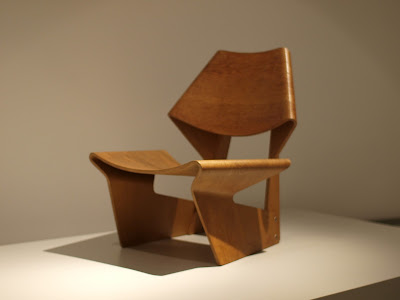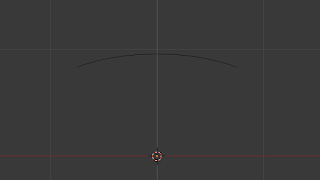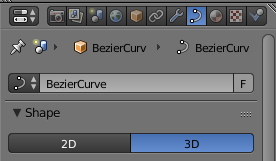 |
| The versatile material of wood used to full effect in this furniture design |
Wood is the most versatile, renewable and sustainable resource on the planet which is why wood is also the most commonly used material in the creation of furniture. As wood is an organic material and can be native to specific regions you may find that different woods are traditionally more commonly used for furniture in different countries. Nowadays, with the cost of travel and transport at an all time low these different woods are imported and exported at a much higher rate and the options for furniture makers are at an all time high. New, man made 'woods' have also added to the variety of options available and it is up to the furniture maker to decide which wood is best for any given project. Other materials are of course used for either structural or aesthetic properties and they are also discussed here. Browse the list below to learn about the qualities and common uses of each type of furniture material.
Cedar:
Cedar is a reddish soft wood native to Lebanon, western Syria and south central Turkey where it is traditionally used in the making of Venetian Blinds. It has a distinctive sweet odour which is why it is extensively used in chest making, closet lining and household novelties. It is very easy to work with, uniform in texture and is also resistant to decay leading to its use as an outdoor house shingle.
Cherry:
Cherry is close grained hard wood that resists warping and shrinking well. The native range of the wild cherry extends through most of Europe, western Asia and parts of northern Africa. Cherry wood reddens when it is exposed to sunlight. It ages well and is extensively used in cabinet making, boat trim, novelties and solid furniture handles.
Chestnut:
Chestnut is a hard wood native to temperate regions of the Northern Hemisphere. There are numerous variations, the most popular of which is Spanish Chestnut. Chestnut wood loses it's durability when grown beyond 50 years so it is difficult to get large, long timber from it. It has always been highly valued for small outdoor furniture pieces, where durability is important, as well as fencing and wooden shingles for covering buildings, it is also used to make barrels.
Chipboard:
Chipboard is an artificial wood made like MDF but from actual wood chips, hence the name. It is widely used for the structural casing of kitchen furniture and cabinets which are then covered with a laminate or wood veneer. It is also widely used for low cost sub flooring. It is only useful in sheet form and cannot be easily used or worked in any other format.
Elm:
Elm is valued for its interlocking grain which gives it a high resistance to splitting, with significant uses in chair seats and coffins. Elm wood is also it quite pliant and is available in long planks due to the long, straight, trunks of the tree, For these reasons elm is favoured as a source of timber for keels in ship construction. Elm was historically used by bowyers during the Middle Ages to make longbows.
Fir:
Fir is a fast growing soft wood which is uniformly textured and has a very low resistance to rotting and decay. It is easy to work and finishes well. Fir is used for making furniture, doors, picture frames, window frames, general millwork and as an interior trim. It is also a main component of plywood.
Glass:
Glass in its ordinary form will break under pressure into sharp shards, and is therefore not suitable for use in furniture. Toughened glass is formed from a prepared sheet of ordinary glass which has been heated and then rapidly cooled with cold air, this heating and rapid cooling process results in the outer surfaces contracting and solidifying before the interior, thereby inducing permanent compressive stresses into the surfaces of the glass. This type of glass is suitable for use in furniture manufacture and can even be bent and curved.
Hemlock:
Hemlock is a lightweight softwood that is native to the North American continent but is also grown in Europe. It machine cuts well due to the wide grain and rarity of knots. It is uniformly textured and has a low resistance to decay. It is mainly used as a construction timber for planks, door panels, sub flooring and transportation crates.
Lime:
Lime is a hard wood native to Britain that is a pale yellow colour, which gradually darkens over time. Lime has excellent carving properties and it is especially favoured for delicate work by master woodcarvers. Seasoned lime is very stable and is soft enough to be carved and yet firm enough to hold a precisely cut surface well. Lime also stains well, has good bending properties and is often used for making furniture.
Mahogany:
Mahogany is finely grained hard wood which is reddish brown color. It is extremely durable and resists swelling, shrinking, warping and twisting. Mahogany is used extensively for high quality, expensive furniture such as wooden cabinets and veneered tables and dressers. It is also used in the construction of boats due to its high resistance to swelling and warping caused by water.
Maple:
Maple is a fine textured hard wood native to Asia with immense strength and hardness. With moderate shrinkage, maple machines well and is best used in flooring, fine furniture and hard wearing surfaces such as bowling alley lanes. Maple is a very light coloured wood and it is sometimes even bleached before finishing to make it even whiter.
Medium Density Fibre Board (MDF):
MDF is an artificial wood made from powdered wood bonded with glue and compressed to form sheets usually 2400mm x 1200mm in size. It is quite soft, fairly pliable and very easy to work with. It cuts, sands and finishes very easily. It is used widely for interior projects especially for cupboards and shelving. Due to its nature it is highly recommended to wear a face mask when sanding MDF as the particles are tiny and easily inhaled.
Oak:
Oak is a hard wood, light in colour, which has good pliable qualities despite its durable nature. It stains and finishes well and resists moisture absorption. Oak is great for furniture, for which it is commonly used, due to its natural aesthetic qualities as well as its strenght. It is also used for boat framing, wooden desks and flooring.
Pine:
Pine is a fast growing soft wood native to Scandinavia. It has a uniform texture and is very easy to work with. It finishes well and resists shrinkage, swelling and warping despite having a wide grain. It is widely used in the construction of timber frame houses, panelling, mass produced furniture, wood pallets and numerous other items. It is one of the most widely used timbers in the world and is so fast growing that it is 'farmed' in countries all over the world.
Plywood:
Plywood is an artificial wood that was invented during the Second World War and was primarily used to build boats and landing craft for the military. It is made from numerous thin laminates of wood glued together. Each layer is at right angle to the grain of the other to give it great strength while also allowing it to remain quite pliable. The thinner the sheet, the more pliable it will be. It is used widely in the building industry as a sub flooring material or as a structural casing between walls.
Plastic:
Plastic is an artificial material that was created in 1862 in London. The material was originally called Parkesine was an organic material derived from cellulose that once heated could be moulded, and retained its shape when cooled. It has since been developed greatly with numerous variations but its original properties remain its most valuable. The ability to mould plastic into any form has made it a very popular material for mass produced furniture but also for modern bespoke furniture where any shape or form is possible.
Redwood:
Redwood is native to a narrow strip of land along the lower west coast of America. It is light but relatively durable softwood that is easy to work with. It has a good natural resistance to rotting and decay and is therefore commonly used for making outdoor furniture, fencing and house panelling. It is named for it's colour, a deep pinky, red hue through the wide grain.
Rosewood:
Rosewood is tight grained hard wood with dark reddish brown color. It is hard to work with and requires a lot of polishing to achieve a good finish. It is commonly used for making musical instruments such as pianos, as well as tool handles, sculptures, veneers and furniture. It has also has a uniquely pleasant fragrance which sets it apart from most other woods.
Spruce:
Spruce is a relatively strong soft wood native to Scandanavia that finishes well but has a low resistance to rotting and decay. It possesses moderate shrinkage and is light in colour and weight. It is a good option for making masts and spars for ships, aircraft, crates, boxes, general millwork and ladders due to its favourable strength to weight ratio.
Steel:
Steel, especially tubular steel, became popular as a furniture making material after the popularity of the Wassily Chair, also known as the Model B3 chair, which was designed by Marcel Breuer in 1925-1926 while he was the head of the cabinet-making workshop at the Bauhaus, in Dessau, Germany. This modern designed showcased the potential use of tubular steel as a structural as well as an aesthetic material which gave added options to furniture designers in terms of what unusual support sytems were now possible.
Teak:
Teak is a renowned hard wood that is very moisture resistant. It resists warping, cracking and decay and is used in a wide variety of ways that make use of its extreme strenght and hard wearing qualities, these include furniture, panelling, window frames, ship building, church doors and flooring. It is also sometimes used as a construction timber for its load bearing capabilities, for example, as a cross beam.
Walnut:
Walnut is a hard word that is fine in texture, dark in colour and strong yet easy to work. It resists shrinking and warping and can take numerous types of finishes as it takes stains and glazes very well. It is used mainly for making solid and veneered furniture, cabinets, wall panelling and decorative novelty trinkets. The English Walnut actually originated in Persia, and the Black walnut is native to the United States.
*Having read this you also find our Furniture Design Styles or Furniture Joinery articles useful.




















































